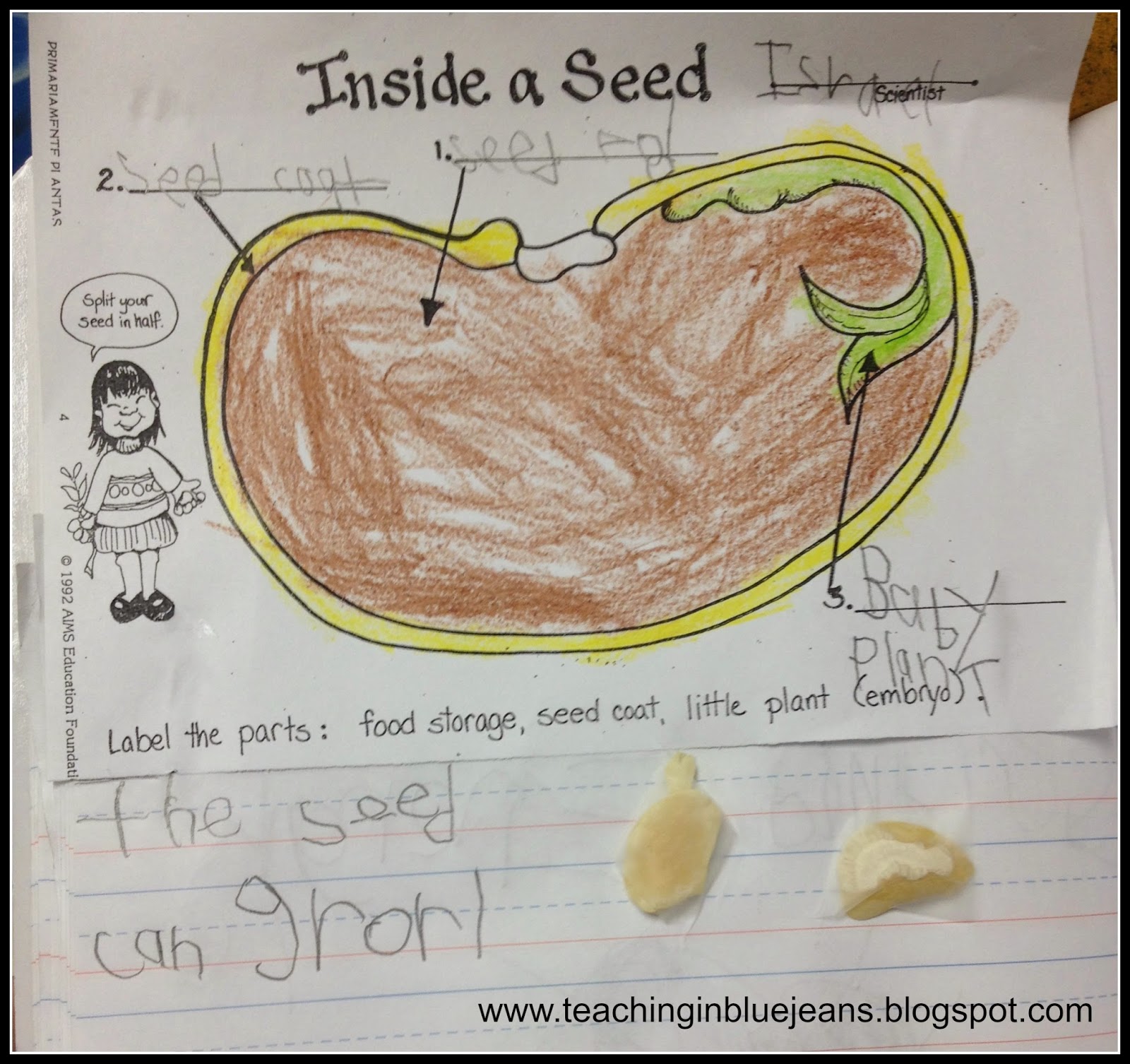We had an amazingly fun week with seeds last week. The kids just loved learning about and exploring seeds all week long. On Day 1 I started by showing my students a dried lima bean and asking the question “Is this alive?” Most of the students said no, but a few said yes. I took out a lima bean that I had soaked in water for a few hours and showed them how I could peel off the seed coat and look inside the seed. And as if that wasn’t enough – we found a baby plant living in the seed!!! Then it was time to turn this science lesson into hands on fun! You would have thought I took these kids to Disneyland!
This is so easy and inexpensive to do. First start by soaking some lima beans in water. Give yourself a few hours, but you can do more. Actually, the longer they soak, the easier the seed coat comes off.










This is such a cute plan! 🙂 Would it be possible to borrow your "Inside a Seed" worksheet? Is it available somewhere else?
– Mindy
This is such a cute plan! 🙂 Would it be possible to borrow your "Inside a Seed" worksheet? Is it available somewhere else?
– Mindy